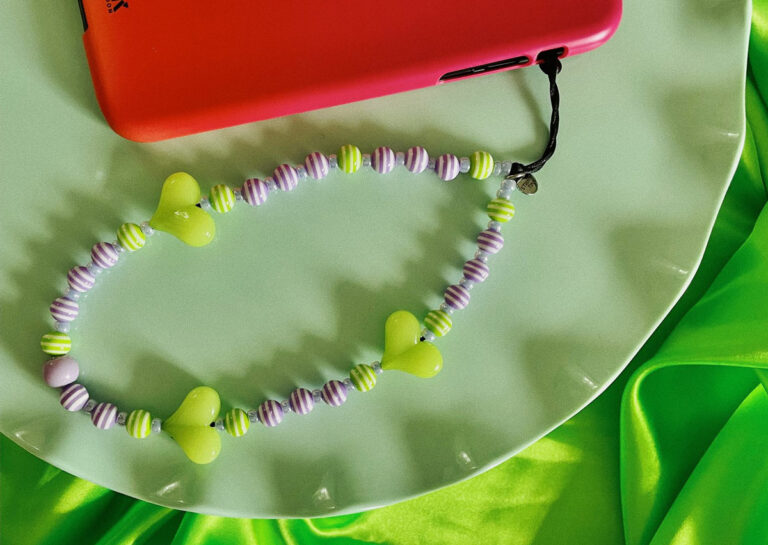Adopted by Dua Lipa, String Ting’s Y2K phone charms are the next big ting

Nowadays, trends—whether global or burgeoning in specific areas like dance, tech, music or fashion—usually explode onto the scene. It feels like it happens overnight. There are some trends, however, that silently sneak their way to the top, and before you know it, every celebrity has bead strings hanging off their phones. We’ve all noticed that, right? It’s not just me? This new “techcessory” is in every celebrity selfie, it seems. Sported by the likes of Kendall Jenner, Gigi Hadid, Dua Lipa, Miley Cyrus—and literally so many others I can’t name—it looks like phone charms is the latest gen Z fashion trend to inundate our social media feeds. In all seriousness though, where can I get one?
The pioneering brand behind this viral 90s-inspired accessory is London-based String Ting. Its founder, Canadian-born Rachel-Steed Middleton initially started the brand as a fundraiser during quarantine for various charitable causes. The main ones being for those severely affected by the pandemic as well as for a number of AIDS organisations. Middleton called the brand “a happy accident” when speaking to The Zoe Report—“It started as a fundraiser during the pandemic, really as a way to teach my kids about giving back and just keeping them busy. It was the equivalent of a lemonade stand.” Now? Everyone wants a glass.
According to Vogue, “String Ting wristlets are, by this point, non-negotiable for Gen-Z influencers.” This falls into the continuing re-emergence of Y2K inspiration in today’s fashion—no but seriously, I feel like I’m reliving my six-year-old Bratz fantasy—with the bead lanyards sitting among the latest childlike fads.
Featured in second place on MashableUK’s list of the best phone trends of 2021—it appears that String Ting is here to stay. Who knows, perhaps the absolute trauma of the past year has left us yearning for the days of our 2000s childhoods? Honestly, take me back, I don’t like it here—it’s scary.
It seems like we’re all scared. In an article for CR Fashion Book, Alyssa Davis writes that “the allure to these playful jewels simply comes from the fact that children have more fun. In today’s unsettling times we crave that sense of safety and escapism that comes from being a kid. While we can’t turn back time, adults have collectively noticed wearing an element of kiddie culture can give them a sense of freedom from adulthood.” Sign me up.
Camp bead jewellery is set to dominate the summer according to Who What Wear. Similar style brands have also popped up and gained quick popularity. Worn by the likes of Bella Hadid, Joe Jonas, Barbie Ferreira and Jaden Smith—Ian Charms is the latest bead jewellery company to get the celebrity stamp of approval. A part of the popularity of this trend could be due to its ‘DIY aesthetic’—with many citing that DIY fashion is the future of the industry. And if Ian Charms doesn’t ring a bell, you must at least know one brand out of the 90s renaissance ‘holy trinity’; La Manso, éliou, mon cher moi.
Speaking to L’Officiel on the viral popularity of String Ting’s designs, Middleton stated how “the smartphone has become the new it bag,” and I couldn’t agree more. The phone has become perhaps the most important accessory to any outfit—especially for those must-see mirror selfies. String Ting’s high-quality colourful beadwork blends both the fashionable and the functional to create the perfect phone strap.
The brand writes on its website that “Every Ting has her thing. From Czech glass and Japanese Miyuki seeds; to Swarovski crystal and up-cycled vintage beads, every String Ting owns their style. Each one is unique in the way they look but not in the quality of how they-re crafted: hand-tied and sealed—every String Ting is assembled on a hard-wearing satin-cord.”
It looks like we really are having a second coming of the 2000s, the question is are you going to join in? I might. I mean, I am 24, but I still want to be a Bratz doll. Move aside Wildflower Cases, your successors have already arrived.




